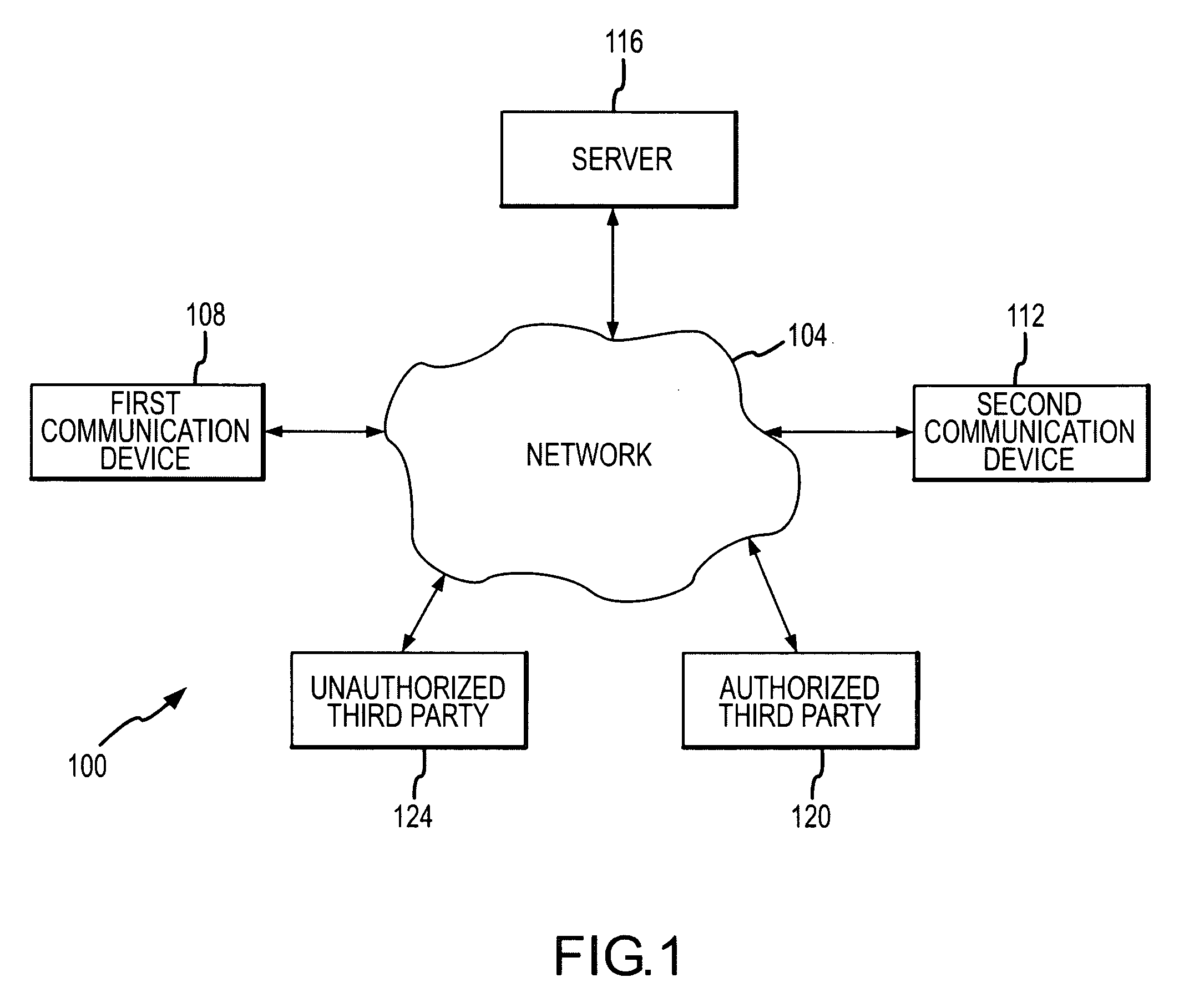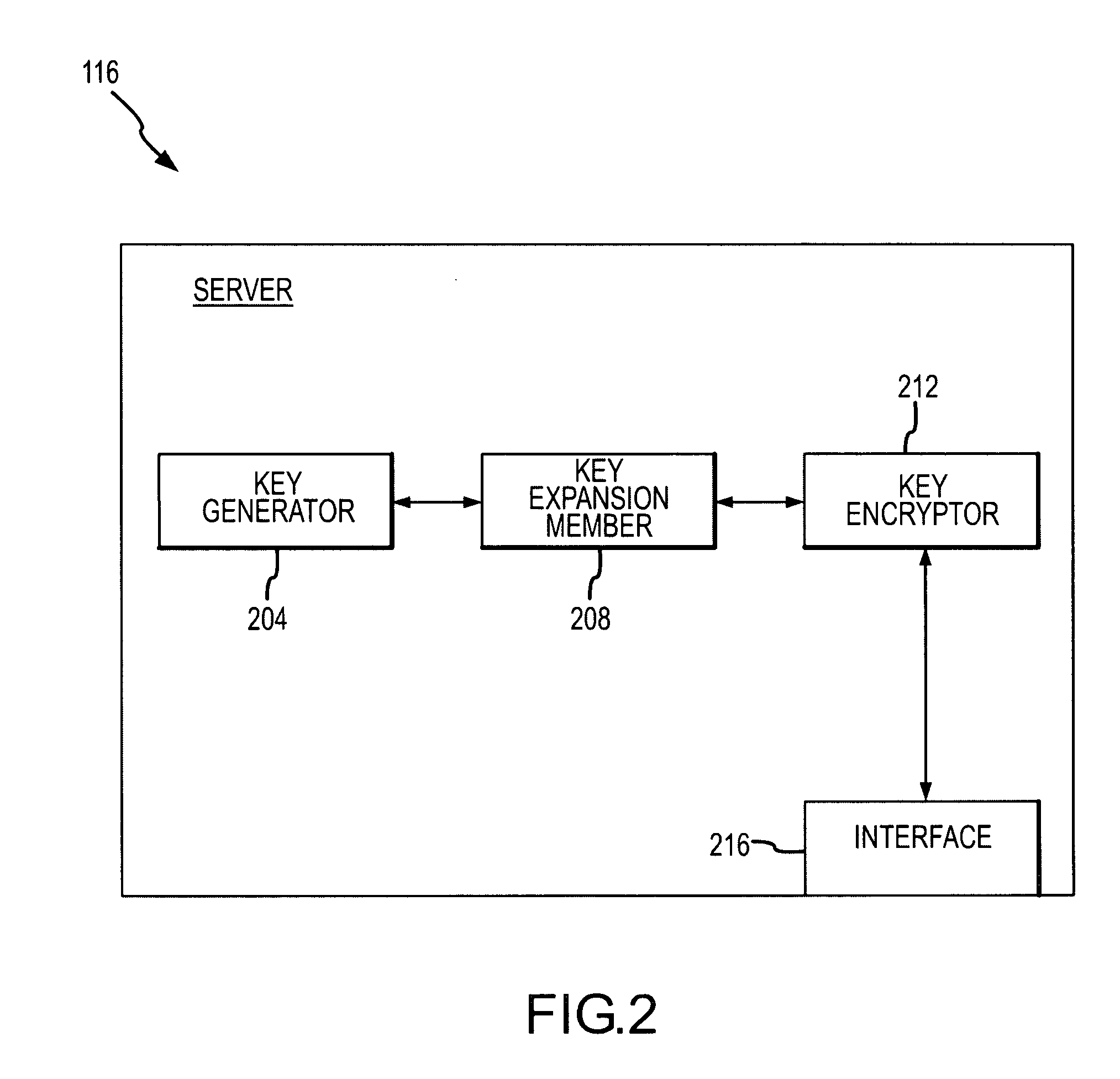Verifiable generation of weak symmetric keys for strong algorithms
a technology of strong algorithms and weak symmetric keys, applied in the field of encryption, can solve the problems of limiting encryption, unauthorized decryption, and message sending with the given smaller key more susceptible to interception and decryption
- Summary
- Abstract
- Description
- Claims
- Application Information
AI Technical Summary
Benefits of technology
Problems solved by technology
Method used
Image
Examples
Embodiment Construction
[0031]Referring initially to FIG. 1 an exemplary communication system 100 will be described in accordance with at least some embodiments of the present invention. The communication system 100 comprises a network 104 connecting a first communication device 108, a second communication device 112, a switch / server 116, an authorized third party 120, and an unauthorized third party 124. The communication devices 108 and 112 can be any of a number of packet-switched devices including, without limitation, Personal Computer (PC), laptop, Personal Digital Assistant (PDA), IP hardphone, IP softphone, wireless phone, cellular phone, instant messaging software, and networking equipment.
[0032]The network 104 may be any type of suitable communications network that is operable to transmit data from a first endpoint to a second endpoint, where typical endpoints include the communication devices 108 and 112, the switch / server 116, the authorized third party 120, and the unauthorized third party 124....
PUM
 Login to View More
Login to View More Abstract
Description
Claims
Application Information
 Login to View More
Login to View More - R&D
- Intellectual Property
- Life Sciences
- Materials
- Tech Scout
- Unparalleled Data Quality
- Higher Quality Content
- 60% Fewer Hallucinations
Browse by: Latest US Patents, China's latest patents, Technical Efficacy Thesaurus, Application Domain, Technology Topic, Popular Technical Reports.
© 2025 PatSnap. All rights reserved.Legal|Privacy policy|Modern Slavery Act Transparency Statement|Sitemap|About US| Contact US: help@patsnap.com



